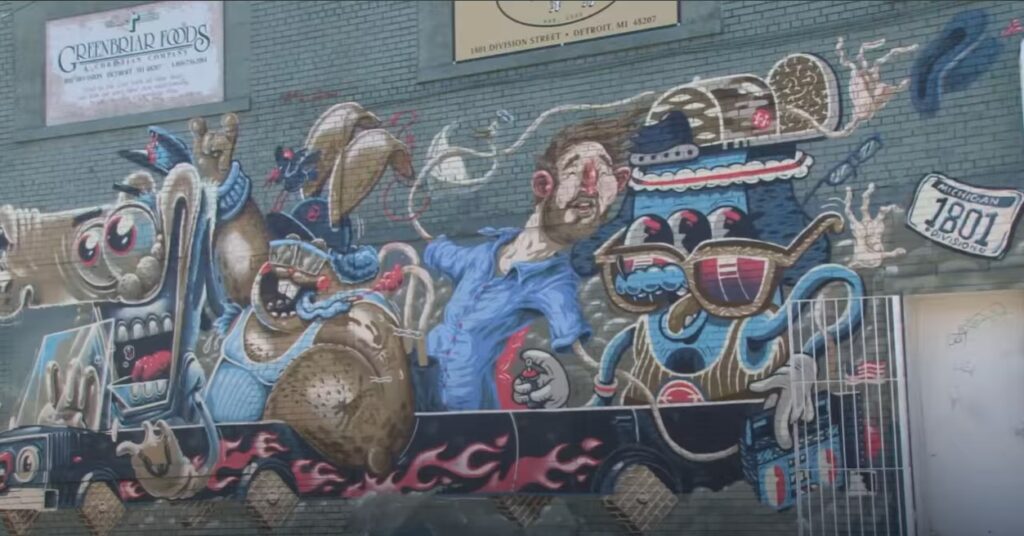Detroit Street Painting: A Colorful Urban Renaissance

In recent years, Detroit has experienced a remarkable urban renaissance, characterized by various cultural and artistic expressions that have breathed new life into the city. One prominent aspect of this transformation is Detroit’s street painting scene, which has become an avenue for creative expression, community engagement, and revitalization. In this article, we will delve into the fascinating world of Detroit’s street painting and explore how it has contributed to the city’s colorful urban renaissance.
Historical Roots of Street Painting in Detroit
To understand Detroit’s current street painting phenomenon, we must explore its historical roots. Street art has been a part of Detroit’s cultural fabric for decades, with graffiti being one of the earliest forms of urban expression. In the 1970s and 1980s, the city saw a surge in graffiti tagging as artists sought to make their mark on the decaying urban landscape.
The Rise of Muralism: From Blight to Beauty
As Detroit faced economic decline and urban blight in the late 20th century, artists began using street painting as a means to address the city’s challenges. Muralism emerged as a powerful form of expression, transforming derelict buildings and abandoned spaces into vibrant canvases. These murals showcased themes of hope, resilience, and cultural pride, bringing much-needed color to Detroit’s neglected neighborhoods.
Community Engagement and Empowerment
One of the key factors behind the success of Detroit’s street painting movement is its emphasis on community engagement and empowerment. Local artists have actively involved residents in the creation of murals, fostering a sense of ownership and pride in their neighborhoods. By collaborating with schools, community centers, and local organizations, street painters have connected with the people and addressed the specific needs and aspirations of different communities.
Revitalizing Neighborhoods Through Art
Detroit’s street painting has played a significant role in revitalizing neighborhoods that were once plagued by crime and abandonment. As murals and paintings started to adorn the city’s walls, they acted as a magnet, attracting visitors and investment. With an increase in foot traffic, local businesses began to thrive, bringing new economic opportunities to the area.
Preserving Cultural Identity
Detroit is a city with a rich cultural heritage, and street painting has become a powerful tool for preserving and celebrating this identity. Artists often draw inspiration from the city’s diverse history, incorporating motifs from music, sports, automotive industry, and civil rights movements into their works. Through these visual narratives, street painters pay homage to the city’s past while embracing its future.
Fostering Collaboration Between Artists and Institutions
As Detroit’s street art gained recognition, it also fostered collaborations between artists and institutions. Galleries, museums, and art organizations began to actively support street painters, providing them with exhibition opportunities, funding, and platforms to showcase their work. This mutual collaboration between the street art scene and established institutions has further legitimized street painting as a form of fine art.
Environmental Awareness and Sustainable Art
In recent years, Detroit’s street painters have embraced environmental consciousness, using sustainable materials and promoting eco-friendly practices. Street art festivals and projects often emphasize the use of non-toxic, biodegradable paints, contributing to a more environmentally friendly urban landscape. Additionally, some artists incorporate messages of sustainability and environmental preservation into their murals, raising awareness among residents and visitors alike.
Street Painting as an Agent of Social Change
Beyond aesthetics, Detroit’s street painting has become an agent of social change. Murals often carry powerful messages about social justice, equality, and inclusivity, prompting discussions and inspiring action within the community. These art interventions challenge societal norms, advocating for positive transformation and a more equitable future.
Detroit’s street painting scene is more than just an explosion of colors on city walls; it represents a profound cultural shift that has revitalized neighborhoods, engaged communities, and empowered local artists. Through street painting, Detroit has undergone a colorful urban renaissance, celebrating its cultural heritage, embracing its diversity, and envisioning a brighter future. This art form has not only beautified the city but also served as a medium for social change and a testament to the resilience of its people. As Detroit continues to evolve, its vibrant street painting scene will undoubtedly remain a vital part of its ongoing urban renaissance.
Generated by ChatGPT